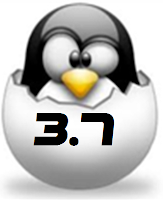This is how I loaded a legacy budle without composer.json in a custom location for my Symfony2.3project with composer.
In one of my Symfony2.3 projects I needed to use an old external bundle. This legacy bundle (from Symfony2.0) hasn’t a composer.json file and in my case I can not add one.
Anyway, I wanted to use composer and its autoloader also for this bundle in order to keep things simple for me.
Let’s assume I wanted to add TwitterClientBundle and its namespace is: Razvan\TwitterClientBundle
For this I added in my composer.json the following:
{
"name": "symfony/framework-standard-edition",
"license": "MIT",
"type": "project",
"description": "The \"Symfony Standard Edition\" distribution",
"autoload": {
"psr-0": {
"": "src/",
"Razvan\\TwitterClientBundle": "vendor/razvan/twitter-client-bundle"
}
},
"repositories": [
{
"type": "package",
"package": {
"name": "razvan/twitter-client-bundle/Razvan/TwittereClientBundle",
"version": "4.4.3",
"source": {
"url": "https://github.com/raztud/TwittereClientBundle",
"type": "git",
"reference": "master"
}
}
}
],
"require": {
"razvan/twitter-client-bundle/Razvan/TwitterClientBundle": "*"
},
...
After that I ran:
php composer.phar update razvan/twitter-client-bundle
and the bundle was added in /path/to/yourproject/vendor/razvan/twitter-client-bundle/
eg:
razvan@main2:/var/www/twitter/vendor/razvan/twitter-client-bundle$ tree
.
--- Razvan
--- TwitterClientBundle
--- DependencyInjection
--- RazvanTwitterClientExtension.php
--- RazvanTwitterClientBundle.php
--- Manager
....
After that I enabled the bundle in AppKernel.php
new Razvan\TwitterClientBundle\RazvanTwitterClientBundle()
and this was all.
Disclaimer:
- Maybe there are better solution, but I did not find them yet.
- The bundle RazvanTwitterBundle doesn’t exist on Github.
P.S. Somebody else wrote a similar post in the past.
